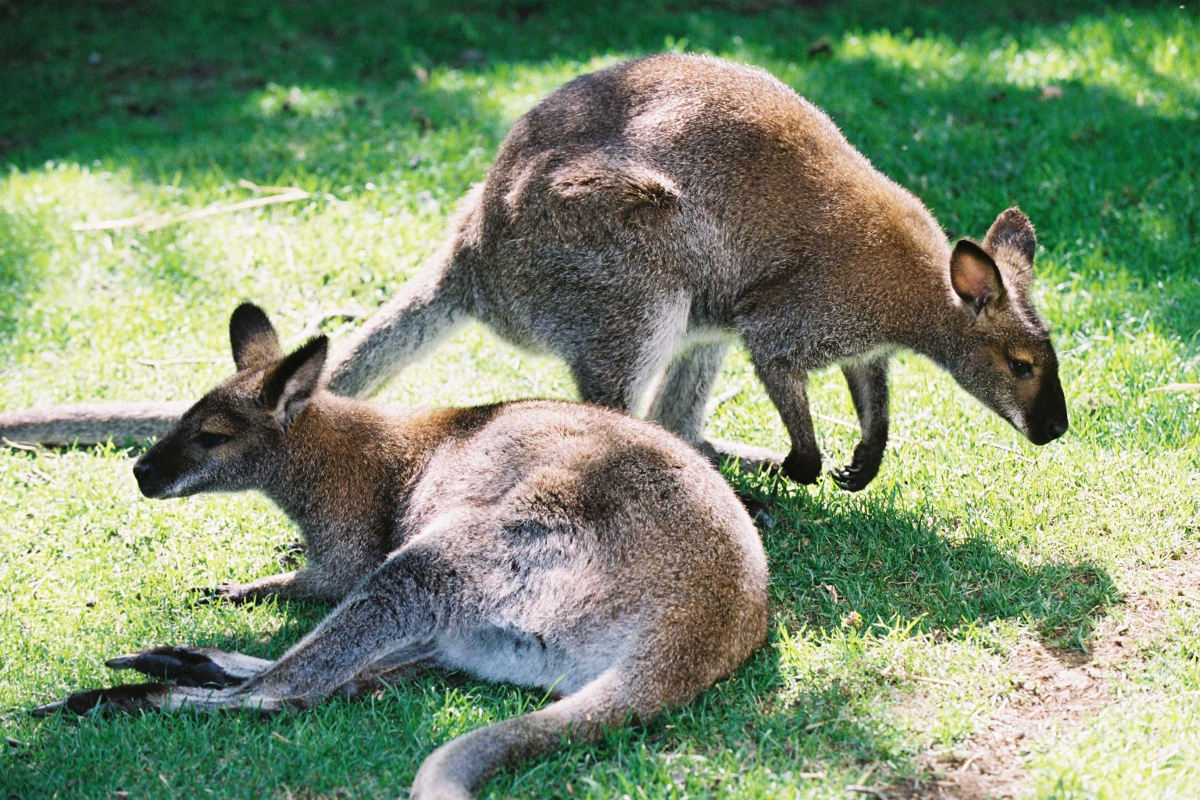
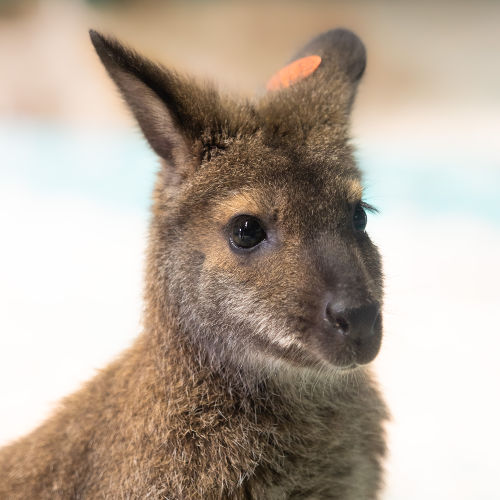
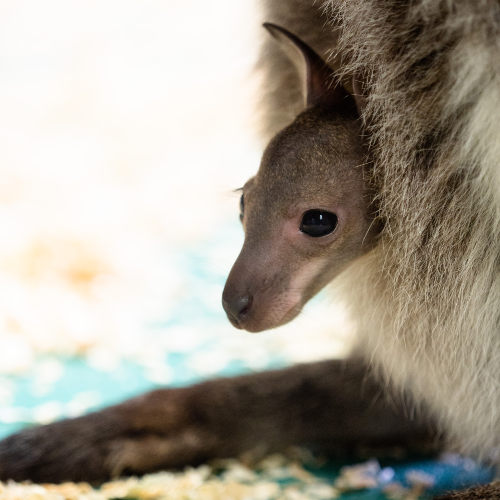
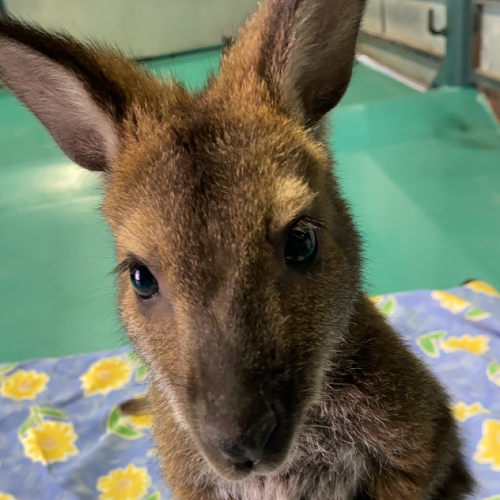
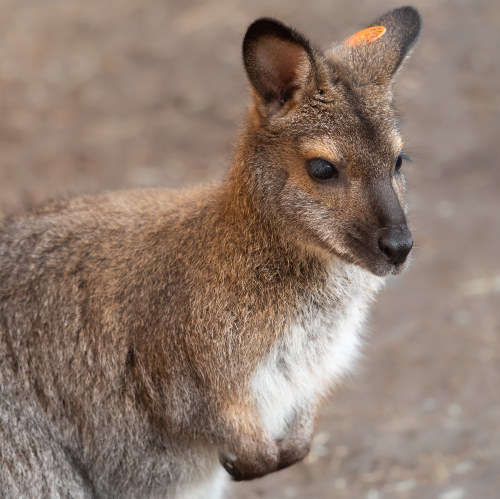
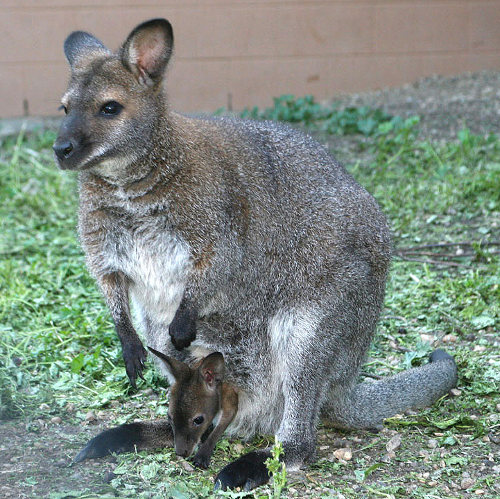
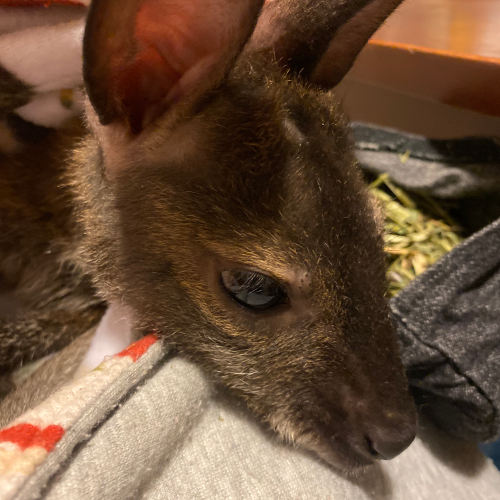




The largest of the eight living wallaby species is the red-necked wallaby, named for the reddish fur on its shoulders and neck. The rest of their bodies are tawny grey, except for their white chests and bellies. These wallabies have large and muscular hind legs meant for hopping and a long, thick tail for help with balance. Though they have very poor eyesight, their sense of smell and good hearing makes up for their lack of vision.
When wallabies are born, they are called joeys. Once they are born, they must crawl into their mother’s pouch where they will nurse for the first seven months. As they reach seven months, they start leaving the pouch and are slowly weaned until they are 10-12 months old.
Red-necked Wallabies are a mostly solitary species, however, there is a hierarchy amongst the females. The males can be extremely aggressive and will often “box” other males.
Did you know? The red-necked wallaby cannot walk backwards!
The Edmonton Valley Zoo is home to six red-necked wallabies.
CLICK THROUGH THE TABS BELOW TO LEARN MORE!
They are approximately 80 cm tall (31.5 inches) and weigh between 13.8-18.6 kg (30-41 lbs).
They live mainly in eastern Australia and surrounding islands. There they are found in the eucalyptus forests, shrubs, and grasslands.
They are herbivores and eat shrubs, grasses, bushes, bark, leaves, weeds, fruits, and vegetables. They will only drink water if necessary as they obtain their liquids from roots and vegetation they eat.
Red-necked wallabies are mainly nocturnal and spend most of the daytime resting. They are mainly solitary but will gather when there is an abundance of resources.
Red-necked wallabies are polygynandrous. The breeding season takes place from December until May, but can occur year-round if resources are plentiful. Gestation is 30 days and one young is born to each mating female.
7-15 years.
Their population right now is mostly stable. However loss of habitat and being hunted for sport and meat do threaten their future population.


